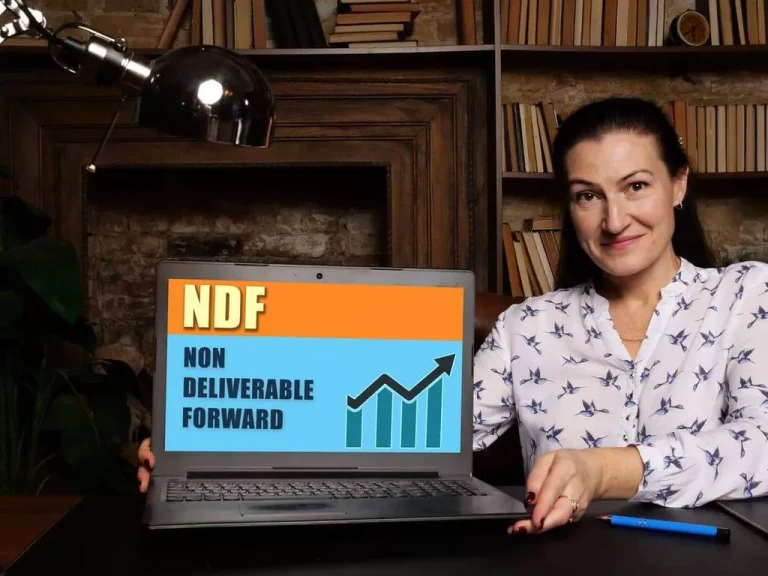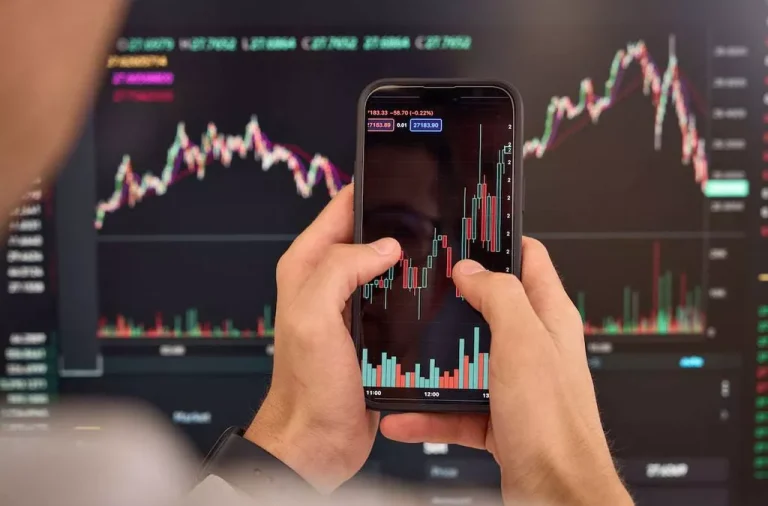The revenue of a market maker is the difference between the bid worth, the price at which the agency is keen to purchase a stock, and the ask value, the worth difference between market maker and liquidity provider at which the firm is keen to sell it. Supposing that equal amounts of buy and promote orders arrive and the value never adjustments, that is the amount that the market maker will achieve on each spherical journey. Advance your market intelligence with a complete set of market insights and data. ICE’s information and analytic options cover a broad range of asset courses to assist you uncover investing and buying and selling opportunities, maintain compliance and handle danger. Assets traded in numerous time zones will expertise various ranges of liquidity relying on the time of day.

Earnings And Losses Of Liquidity Providers
In this article, we’re going to take a closer look at https://www.xcritical.in/ market makers’ instruments. The NYSE Research team explores market developments, analyzes exchange merchandise and buying and selling situations, and presents data-driven views that promote larger understanding of our markets. For instance, we recently analyzed how elevated retail exercise in the equities market has affected various aspects of buying and selling, particularly the interval immediately after the opening public sale. Market individuals usually keep away from this time of day as a outcome of larger volatility, an method price re-evaluating given present developments.

Wondering How These Solutions Can Enhance Your Business?
In markets with many liquidity providers, competition drives more favorable prices for merchants. Their depth ensures that even large trades may be executed with minimal price impact Smart contract. This is especially advantageous in extremely liquid markets, where the sheer volume of buying and selling and the presence of a quantity of LPs can lead to very aggressive spreads. In the monetary market, Market Makers play each buying and sellers roles. Their major function is to provide ongoing market liquidity, therefore bridging the supply-demand imbalance.
Providing Liquidity To Exchanges: The Role Of Market Makers
A market maker may be described as a dealer who, based mostly on an settlement, is responsible for the upkeep of the worth, demand, provide, and/or volume of trades of monetary devices, currencies, or goods. Enhanced liquidity comes with the benefit of lower spreads, the difference between the ask and bid prices of property out there. Being able to buy or sell at a more advantageous value and with a lower threat of price slippage successfully means reducing the trading costs for market participants. Threads in the intricate fabric of the monetary ecosystem, partnerships and alliances hyperlink establishments to extend their mixed might and attain. Whether with market makers or liquidity suppliers, these relationships are strategic partnerships that might determine the future success of a brokerage.
- This article describes who the liquidity providers and market makers are, how they influence the monetary markets and the way they differ from one another.
- LMMs and Supplemental LMMs have alternatives for enhanced buying and selling incentives when assembly certain market quality benchmarks.
- In return, the specialist is granted varied informational and commerce execution advantages.
- Their steady presence can prevent abrupt market gaps and supply a sense of reliability to other market members.
- The Market Makers for the brand new Matrix Market Making Scheme are chosen in tender procedures.
The degree of fee income should exceed PL in expectation for liquidity provision to be worthwhile in CFMMs. For instance, main currency pairs in the forex market are highly liquid, whereas thinly traded shares may be illiquid. The order guide is used to gauge market sentiment and assess the depth of liquidity at completely different value levels. It helps make knowledgeable selections about when and at what value to enter or exit a trade. A market within the fashionable sense was shaped with the emergence of market makers.
Artificial intelligence is today’s market making, facilitating a smooth move of concluded offers and providing instant liquidity through mathematical algorithms. There has definitely been a breakthrough within the buying and selling world with automated programs that may course of up to a million orders simultaneously. These systems have expanded the chances for trading methods and have enabled the event of new applied sciences to extend the liquidity of the market. On the opposite hand, Liquidity Providers are just as essential, however from one other perspective. This not solely ensures that traders have a practical market to trade, but in addition offers stability to the worth of the token and reduces volatility (a hallmark of rug pulls).
As a result, they provide liquidity and allow buyers and sellers to commerce more effectively. In this article, we’ll study the roles, variations, and impacts of liquidity suppliers and market makers. Third-party market makers are a substitute for traditional market makers. As against liquidity suppliers, the “party” on this scenario is often a hedge fund, and so they act as arbitrageurs to achieve liquidity from different exchanges by hedging their positions in different markets.

The term ‘market maker’ is said to gamers who ‘make the market’ – i.e., banks, funds, and different establishments are the muse for Forex. They hold tens of millions of dollars and different currencies, sustaining the highest degree of FX turnover. Such a market can’t exist without market makers.These main gamers purchase and promote giant volumes of property, impacting their charges and capitalizing on the differences. Regarding the different types of market makers, it’s important to note that change participants fall underneath the class of speculative market makers. These market individuals (such as tiny banks and private investors) own such substantial quantities of property that an affordable price impulse is created when they deal. Financial market individuals who act as market makers are those that hold the markets lively by constantly preparing to conclude trades with other market individuals.
Illiquidity occurs when it’s not possible to promote an asset or exchange it for money with no significant loss of value. Liquidity suppliers or market makers search to avoid this by serving as intermediaries in the monetary markets. A financial institution, financial establishment, or buying and selling firm may act as a core liquidity supplier. The different business fashions and capabilities of those liquidity providers enable them to serve the market in several methods.
However, an imbalance, the place one aspect considerably outweighs the other, can lead to price gaps and excessive volatility. Use a Market Maker to generate quantity and spotlight developments, whereas a Liquidity Provider ensures that users can purchase and sell your token without problem. This combination not solely increases publicity, but additionally strengthens the steadiness of the token in the market. Although both have liquidity-related roles, their approaches and goals are completely different. Despite this, brokerages who arrange as B-book dealers face a hefty price tag. The establishment of buying and selling desks, in addition to algorithmic trading, which mechanically takes the opposing side of customers’ transactions, are examples of those methods.
Tier1 liquidity suppliers are probably the most respected banks and institutions, corresponding to Deutsche Bank and Bank of America. These organisations work together and trade with one another directly through the ECN system, thus forming the interbank market. Tier2 providers are smaller firms which usually serve as intermediaries between brokers and the interbank market. Liquidity providers are market members, usually major monetary establishments or companies, that guarantee there’s an ample provide of assets in the market for active buying and selling. Liquidity providers ensure market liquidity by sourcing quotes from numerous entities. Market makers create a marketplace for particular securities by providing bid and ask prices with their own capital.
They make certain merchants at all times have a counterpart for his or her deal by continually changing their stated charges and stock depending on market dynamics. They earn cash by charging a charge for their companies, sometimes within the form of a selection of an asset. Liquidity providers are immediately connected to the interbank Forex market, whereas market makers operate in particular markets or instruments as designated individuals. Liquidity suppliers are subject to laws as they play a important function in maintaining market stability. Institutional market makers, when operating as market makers, are additionally regulated entities.
Market Makers and Liquidity Providers must quote according to defined parameters corresponding to order guide presence and maximum spreads over a fixed interval in the respective order book of EEX in order to receive a cost. As a hard-working, goal-oriented, and well-rounded person, I always try to do quality work for every job I do. Faced with challenging tasks in life, I have developed the habit of pondering rationally and creatively to solve problems, which not solely helps me develop as an individual, but also as a professional.
For instance, securities firms and different financial companies serve as designated market makers (DMMs) for the New York Stock Exchange. DMMs are among the many change’s core liquidity providers, responsible for the provision and orderly buying and selling of an assigned listing of shares. This means they take the opposite side of the trade when there might be an imbalance of buying for and promoting in the market. As for liquidity providers (LPs), they act as mediators between brokers and MMs. Brokerage firms want to offer lively merchants with a broad order e-book, particularly while talking about fewer in-demand pairs. The insufficient quantity of an order book results in price slippage and gaps.
For instance, in extremely liquid markets, merchants might opt for high-frequency strategies that capitalise on small price movements. In distinction, they might undertake a extra patient, long-term strategy in illiquid markets. Automated instruments, such because the Smithii Market Makerallow this technique to be easily applied. However, market makers do not enhance market cap and may generate losses in risky markets if the algorithms fail.
